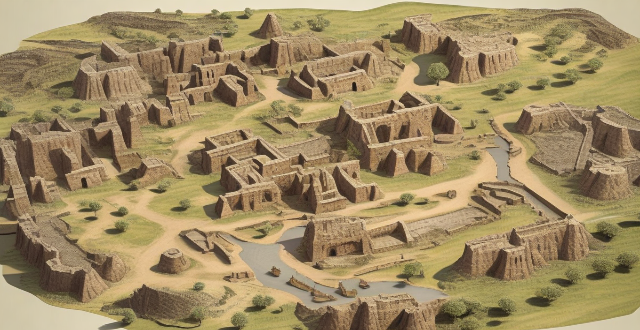Cultural sites, including archaeological digs, historical buildings, monuments, and landscapes, serve as invaluable resources for understanding history. They contribute to our understanding of history by preserving physical evidence, providing visual representation of past lifestyles, contributing to educational resources, aiding academic research, encouraging cultural exchange, enhancing national and local identity, and interpreting social evolution. Through cultural sites, we can trace the evolution of human societies, understand various cultural influences, and appreciate the complexity of historical events.

Cultural Sites: Windows into History
Cultural sites, including archaeological digs, historical buildings, monuments, and landscapes, serve as invaluable resources for understanding history. They are physical manifestations of the past that allow us to engage with history in a tangible way. Here's how they contribute to our understanding of history:
Preservation of Physical Evidence
- Archaeological Excavations: Unearthing artifacts and structures from different periods provides direct evidence of past civilizations.
- Historical Buildings: Monuments and buildings like the Colosseum or the Pyramids give insight into architectural techniques and societal values.
Visual Representation of Past Lifestyles
- Artifacts: Objects such as pottery, tools, and jewelry provide a glimpse into daily life and cultural practices.
- Sculptures and Paintings: These artistic expressions reflect the beliefs, aesthetics, and social norms of their time.
Contribution to Educational Resources
- Museums and Galleries: Displays of cultural artifacts inform the public and support educational initiatives.
- Documentary Films and Literature: Often inspired by cultural sites, these resources disseminate historical knowledge widely.
Aid to Academic Research
- Historical Analysis: Cultural sites offer data for scholarly research, leading to a deeper understanding of historical contexts.
- Cross-Disciplinary Studies: Archaeology, anthropology, and history blend at cultural sites to form a more comprehensive narrative.
Encouragement of Cultural Exchange
- Heritage Tourism: Visiting cultural sites promotes cultural exchange and global awareness.
- International Cooperation: UNESCO World Heritage Sites foster international collaboration in preserving shared history.
Enhancement of National and Local Identity
- Community Pride: Local historical sites often become symbols of pride and identity for communities.
- National Narratives: National monuments and landmarks help shape a country's collective memory and identity.
Interpretation of Social Evolution
- Social Structures: The layout of historical sites can reveal information about social hierarchies and organization.
- Economic Development: Artifacts related to trade and craftsmanship provide insights into economic systems of the past.
In summary, cultural sites are not just relics of the past; they are interactive textbooks that bring history to life. Through these sites, we can trace the evolution of human societies, understand various cultural influences, and appreciate the complexity of historical events. They serve as bridges connecting us to our ancestors and helping us recognize patterns that continue to shape the present and future.